Last updated: 28 July 2004
|
Last updated: 28 July 2004 |
After returning home from the Third Mighty ETX Star Party I noticed that the corrector lens on my ETX-90RA (which I took on the trip to Arizona) had become very spotted and sure looked like it could use some cleaning. Here are some photos that show some of what I was seeing.
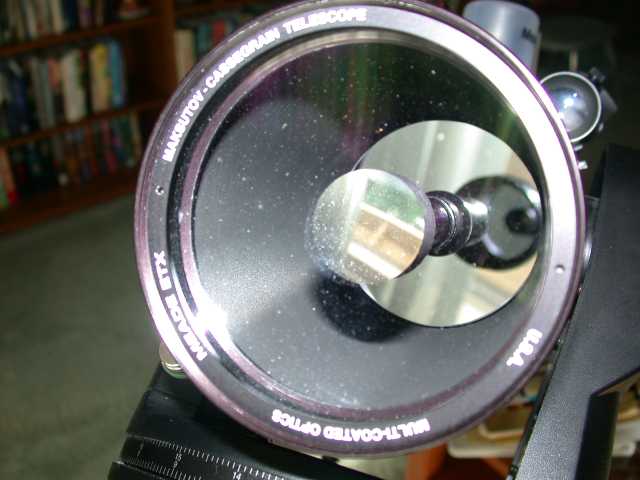
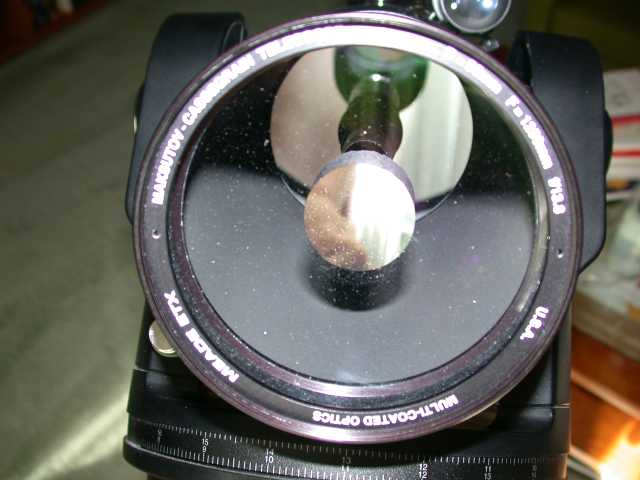
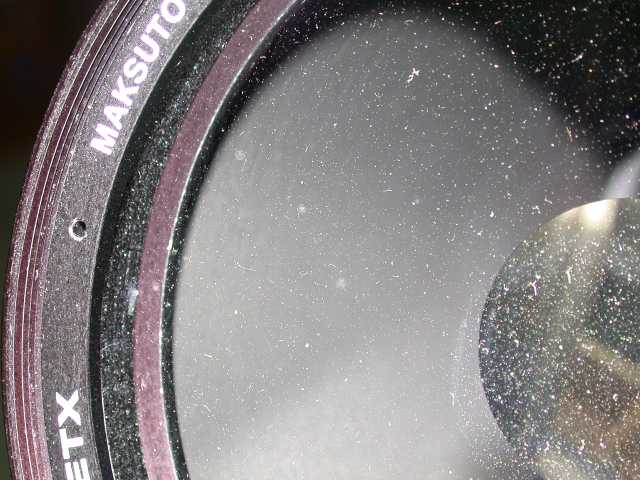
I thought about making some of Dr. Clay Sherrod's cleaning solution (as explained on the Cleaning Optics page on my ETX Site) but then I remembered that Oceanside Photo and Telescope was selling "Doc Clay's Cleaning Kit" for $50 (no longer available). I contacted OPT and they sent me a kit to try out (reminder: I had a relationship with OPT). It arrived a few days later.
As shown in the photo below, it comes with one bottle of Dr. Clay's cleaning solution, one bottle of rinse, 4x4 cleaning pads (quantity 200), a 2" brush, and a three-page set of instructions.
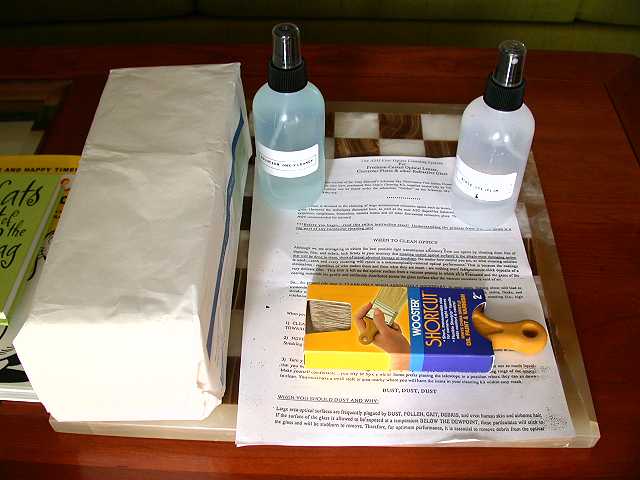
Although neither the instructions, OPT's product page, nor Dr. Clay's cleaning solution page mention it explicity, neither do they warn against using the cleaning solution on newer coatings like Meade's UHTC. I presume it is OK but I would like to see that in print! My old ETX-90RA (original ETX model from 1996) has only the standard coating so I knew I was OK. My LXD55-8"SC with UHTC doesn't (yet) need cleaning so I'll worry about that later. [See Dr. Clay's comments at the end of this review.]
The first step (per the instructions) was to "dust off" the loose particles from the lens using the brush. It turned out that most of what I saw (and what's visible in those photos above) was just loose dust. Following the technique in the instructions I was able to easily and safely (that's an important point!) remove the dust; the different in the appearance of the lens surface was amazing. I felt I could have stopped at this point but there were still a few "blemishes" that I wanted to remove since I had started this process.
So it was on to the next steps. The instructions advise to divide the lens surface into quandrants and clean one quandrant at a time. Due to the small size of the ETX-90 I decided to work on halves instead of quandrants. I applied the cleaning solution to one pad and cleaned one half of the lens surface. Following the instructions I immediately dried the surface with a dry pad. Again following the instructions, I used a second dry pad to finish that half. I then repeated these steps on the other half.
The next step was to "buff" the lens and when I did that, the results were amazing. In fact, I declared the process complete at this point and skipped the optional rinsing steps. The lens looked pristine to my eye and showed no evidence of smearing! And what these photos show isn't too shabby either!
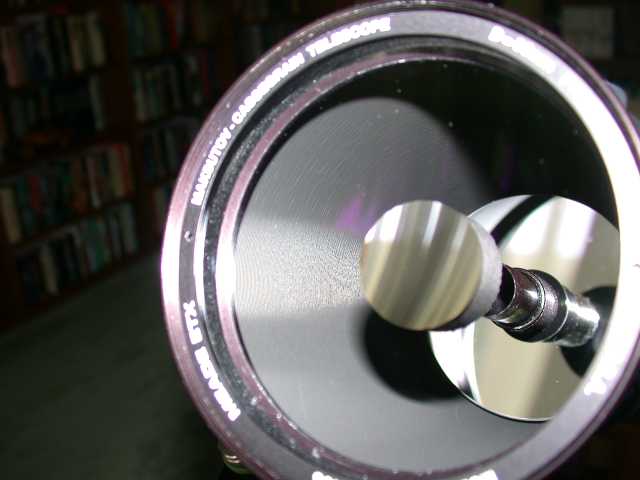
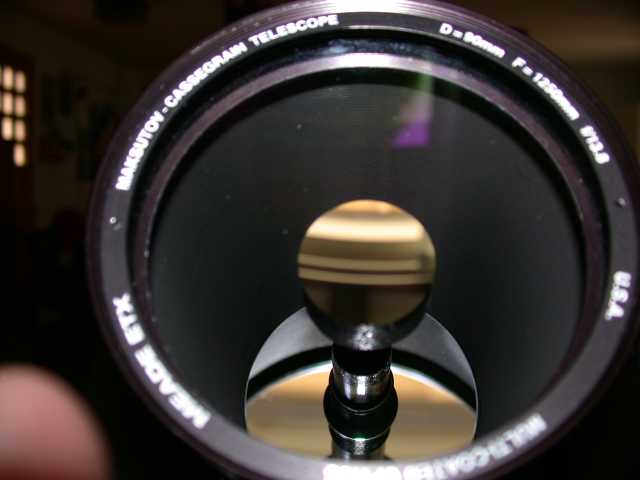
Fortunately, I picked a good morning to do the cleaning. The evening had some fog threatening to come in but it never arrived so I was able to check the results on some astronomical objects. No light smearing, no flares, no evident deterioration of any kind was visible. And Jupiter was brighter and had more contrast than before I cleaned. So I declare the cleaning a success.
Is the OPT Doctor Clay's Cleaning Kit worth the $50? Based upon my minimal usage of the components for the ETX-90, I expect them to last a long time. So I would say it was worth it. Obviously, larger and dirtier lenses will require more solution and pads than I needed for the ETX-90 but the results should be worth it (if you follow the instructions). Yes, you could purchase the required items to make the cleaning solution yourself per the instructions on Dr. Clay's web site and in that previously mentioned "Cleaning Optics" article and you could purchase the necessary cleaning pads and brush, but OPT has done all this for you saving you time and some effort. You will have to decide if you want to invest your time and money into acquiring the individual components or just get right to cleaning your telescope optics.
One last comment: as advised many places, including in the cleaning kit instructions and on the referenced web pages, you should clean your optics ONLY when necessary. Most users will want to clean at the first sign of "dirt" and that may in fact may not be necessary. However, if the "dirt" is pollen or debris that could damage the coating, then cleaning right away is mandatory. Having the cleaning kit readily available could save you some anxious nights.
Subject: Re: Doc Clay's Cleaning Kit Sent: Sunday, July 25, 2004 11:40:39 From: P. Clay Sherrod (drclay@tcworks.net) You did a great job on the lens too....very nice. You are right in the assumption on the UHTC....the solution is actually formulated for that and the Celestron StarBright coatings....if it will work on those without damage it will clean everything. One note: the solution and OPT kit are for REFRACTIVE optics only; no one should attempt to use them for reflector mirrors; also note that the solution and the OPT kit is excellent for cleaning binoculars, camera lenses, eyepieces and prism diagonals as well! Clay -------------------- Dr. P. Clay Sherrod Arkansas Sky Observatory Harvard MPC H41 (Petit Jean Mountain) Harvard MPC H43 (Conway) Harvard MPC H44 (Cascade Mt.) http://www.arksky.org/
Return to the top of this page.
Go back to the ETX Home Page.